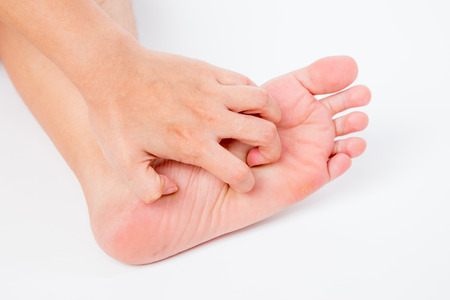
If you’re like most people, when winter rolls around, the concern for contracting fungal infections tends to diminish. But some conditions can elevate the risk even more so in winter than during the summer months. So in today’s post, Dr. Eric Ricefield, Dr. Mark Yagodich, Dr. Aliza V. Eisen, and Cassandra Stache, DPM of greater Philadelphia’s Your Next Step Foot and Ankle Care Center share how you can protect your feet against fungal infections this season.
The type of fungus that causes athlete’s foot needs a few things to survive – moisture, warmth, and a lack of light. While public workout areas such as locker rooms and pools have these in abundance, so do some winter boots! Winter socks and boots are designed to keep our feet warm, and in some cases, that can also mean more sweat. Sweat that is trapped against our feet can be a haven for fungus, allowing it to thrive and expand.
How to Protect Your Feet Against Fungus This Winter
The very best way to deal with a fungal infection is to prevent it from occurring!
So, how can you do that?
- Wear the right shoes and socks. Cotton is absorbent and will keep wetness against your feet more than other fabrics, so try to avoid it. Wool socks are a better choice for wicking away moisture from the foot. Always give socks and shoes plenty of chances to dry out. Keep at least two pairs of good winter boots so you can switch between the two daily. Give shoes and boots at least 24 hours to dry out thoroughly.
- Use an antiperspirant. The more you prevent your feet from sweating, the more comfortable you will be, and you will be less likely to contract a fungal infection. Using a spray-on antiperspirant can help.
- Pay attention to cracking and dryness. If your feet dry out in the winter, apply a good moisturizing cream to them. Extra points if the cream also contains anti-fungal properties! Don’t slather your feet in moisturizer, particularly in the areas between your toes, where fungus can thrive.
- Keep an eye on your feet. In many cases, fungal toenail infections remain unnoticed for some time, allowing the fungus to dig in. If you notice a blemish or white streak on your toenail, and it gets larger or hasn’t begun to fade after several days, it’s time to see your podiatrist. If you feel burning or itching on the skin, you may need treatment for athlete’s foot.
Don’t let a fungal infection attack your feet this winter. For more help preventing them, contact Greater Philadelphia’s Your Next Step Foot and Ankle Care Center to schedule your next checkup. You can click here to locate contact information for the office nearest you to book your appointment.
